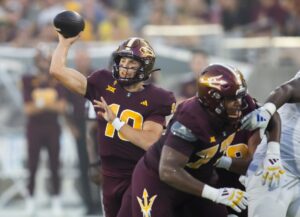
If you took a quick look at the top holdings in the Harbor Capital Appreciation fund, you’d be tempted to think that its managers chase momentum stocks, with names like Microsoft and Nvidia near the top of the list. But the fund’s history shows that those bets were first placed long ago — in 2015 for Microsoft, and 2016 for Nvidia, according to Morningstar. The fund’s position in Apple dates back to 2004. The Harbor fund itself dates back to 1987 and has been sub-advised by Jennison Associates since 1990. Blair Boyer, a managing director and co-head of large cap growth equity at Jennison, said that in order to back long-term winners, his investment team searches for companies that have the ability to find — and fund — new ways to grow over time. To unearth those companies, Boyer’s team focuses on secular growth stories and above-average rates of growth in revenue, operating margins and net income. “The self-reinforcing nature of these characteristics is such that it tends to mean that companies have the ability to use the free cash flow that they generate to reinvest in their business,” Boyer said. By the numbers The Harbor fund’s institutional share class (HACAX) has a three-star rating from Morningstar , and has outperformed its category and index over the past decade. The fund returned 53.7% in 2023, outpacing both the Nasdaq Composite and the S & P 500 , and marking the fourth time in the past decade that HACAX has landed in the top 10% of large growth funds, according to Morningstar. Boyer, who has spent three decades at Jennison, only became a named manager on the fund in 2019 but said that the fund’s strategy is basically unchanged over the years. The investment team running the fund lost long-time manager Sig Segalas, Jennison’s co-founder, when he died in January 2023 at age 89. Segalas had managed Harbor Capital since 1990. “We have a very strong belief that there’s a repeatability in the process,” Boyer said. The fund is off to a strong start in 2024, as well, with a return of nearly 12% through March 15. It now has about $28.5 billion in assets and an expense ratio of 0.68%. Top holdings The Harbor fund is fairly concentrated, with the top 10 holdings accounting for nearly half of the portfolio’s value. Those top names are mostly tech stocks, broadly speaking, with a few exceptions such as Eli Lilly . “If you looked over the very long history of the fund, I’d describe consumer, technology, broadly defined, and health care as kind of the areas where we’ve had the most exposure,” Boyer said. The list of holdings also shows examples of those companies that have “self-reinforcing” growth. In addition to tech names like Amazon that have seen big changes as the the internet has matured, Boyer pointed to Visa and Mastercard as holdings that have been able to deliver “second and third acts” to become long-term winners as payments have increasingly become digital. In addition to Boyer and the other fund managers, Jennison has a team of analysts that each cover 30-40 stocks, looking for new buys to recommend. Boyer credited last year’s addition of Advanced Micro Devices in part to the work one of those analysts did on opportunities in the semiconductor market during Nvidia’s rally. “It was a name that we came to and did more work on based on our understanding of high performance computing in general and the opportunities that GenAI was beginning to unlock,” Boyer said. Portfolio strategy For professional portfolio managers, It’s not just what to buy, but how to add a new stock to your portfolio. Boyer’s team aims to keep the fund fully invested, so adding stocks requires trimming or liquidating another position. They will make tweaks as the growth profile of stocks change, and will typically start small when adding a new stock. “We’re going to start with a 30 or 40 basis point [0.30%-0.40%] sized position, and then we’ll add to that over time, largely dependent on the performance of the business,” Boyer said. A basis point is equal to 0.01 percentage point. Another part of the Jennison team’s strategy is to count on different types of growth within the portfolio to help reduce the risk of the fund. For example, Boyer said that the fund holds stocks in three different growth buckets: companies notching 20+% increases, those at 15-20%, and others that score slightly above average growth, but with recurring revenue characteristics, such as credit card stocks. “The structure of the portfolio is not just around trying to own high growth names,” Boyer said.






